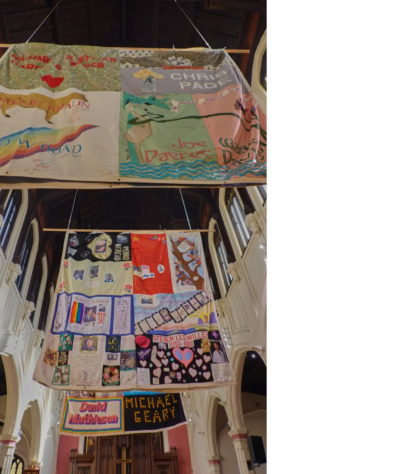Growing up Mormon, I was always taught to be a good example. Now I’m trying to teach myself to find exemplars.
Last month, I walked into the Episcopal Church of St. John’s the Evangelist in the San Francisco’s Mission district. I was attending a service, but not a worship service. Representatives of some dozen congregations, mainly Catholic, showed up to organize for more-affordable housing in one of the country’s most-expensive cities. They were part of a network of faith-based community organizations called Faith in Action, people who make their beliefs active by working for just causes.
When I was young and Mormon, being active in the LDS Church was more-or-less synonymous with being a good person. It meant showing up at meetings, paying tithing, and fulfilling Church assignments. All the energy and attention was insular, lavished on people who were already Church members, or who might become members.
The energy at St John’s stretched into the broader community. That inter-connectedness was all over the walls, with notes on being a good ally for marginalized communities. Sections of the AIDS Memorial quilt hung from the ceiling, in remembrance for people we lost in the 1990s.
It made my head spin, this idea that a church could foster a spirit of community beyond its members, that it would invite people in not to convert them, but to celebrate them, to work together for a common cause.
I’ve been scratching my head to try to remember examples of how Mormons have worked with the greater community. What I remember is not good. In California, the Church sent people to their neighbors campaigning for the Knight Initiative (in 2000) and Proposition 8 (in 2008), both of which limited marriage to male-female couples.
But it’s not just that the Church was on the unjust side of the issue – the approach was sending members out to tell others what to do, not inviting strangers in to hear what they had to say.
I am now decades out of the Church, and there are still Mormon values I cherish: showing up when you say you’ll show up, constantly striving for progress (though that has drawbacks too), declaring commitments and keeping them.
But when it comes to making communities, it’s Saint John’s I want to take as my example: invite others into your spaces not to change them, but to hear them.
Image: Sections of an AIDS Memorial Quilt at the Episcopal Church of Saint John’s the Evangelist

Very thoughtful post!
Thank you.
I remember in a very early job interview being asked about “extracurricular” activities. All I could mention was teaching Sunday school, teaching the elders’ quorum, being a co-chair for the Singles group, being a stake missionary (all of these at the same time, of course). The interviewer said something like, “Wow, you do a lot of volunteer work.” I remember thinking the word didn’t sound right. Volunteering was to help people. All the stuff I did was just assignments. I didn’t have the words to explain how I felt, but you’ve described it exactly, Monya.
When Mitt Romney was running for president, I remember a news story commenting on how much money he gave to charity. “He gives 10%.”
I thought, “That’s not charity. Charity is helping people, not an organization.” And charity connotes something given voluntarily. Technically, Mormons pay tithing willingly, but when so much coercion is involved, “willingly” loses some of its meaning.
Very thought provoking Monya.
This never occurred to me until I read your post. We were very involved in church activities with other members – but I cannot recall any activities out in our own community. I will be stewing on this for a while. ??